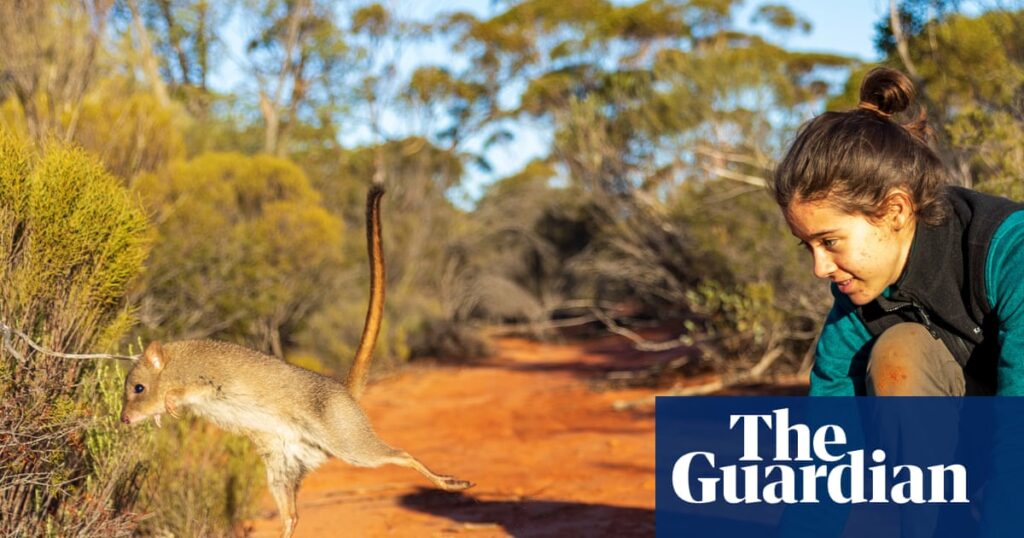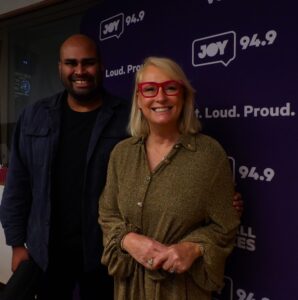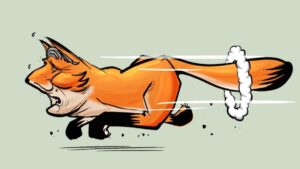
Like a ball of fur mounted on a spring, the brush-tailed bettongs leapt into the crisp night air, landing on a landscape of acacia scrub where they hadn’t roamed free for perhaps a century. The Australian Wildlife Conservancy (AWC) recently released 147 of these small marsupials into its sanctuary at Mount Gibson, located about four hours northeast of Perth on the edge of the wheat belt.
“When we open the bag, their first thought is just ‘we’re outa here’,” says Dr. Bryony Palmer, a wildlife ecologist at the conservancy. “While they’re in the air, they figure out where they are and then off they go.”
The bettongs, also known as woylies, were initially taken from an 8,000-hectare fenced “safe haven” within the sanctuary, a refuge from the predation of feral cats and foxes. Since 2015, the population inside this haven has grown from 162 to about 1,000. With predator numbers managed outside the fence, there is hope that the bettongs will thrive as they once did before European settlers introduced these prolific wildlife predators.
Ambitious Conservation Goals
This week, the AWC is set to unveil an ambitious strategy aiming to expand its conservation efforts across Australia. Currently, the organization manages 6.8 million hectares of land either owned or partnered for conservation purposes, alongside an additional 6.1 million hectares where it collaborates with pastoral companies to enhance conservation efforts.
“If you add the 6.8m hectares of land AWC owns or partners on purely for conservation to the 6.1m hectares where it works mostly with pastoral companies to improve conservation, then that’s significant, globally – it’s about 1.7% of Australia,” says Tim Allard, Chief Executive of AWC.
By 2035, the AWC hopes to expand its conservation work to cover approximately 5% of Australia’s land mass. “This is about where we want to be. But it’s what we think is necessary to secure Australia’s natural heritage,” Allard explains.
Addressing Australia’s Extinction Crisis
Australia holds the unenviable record for the highest rate of mammal extinctions in the world. The federal government has pledged to halt new extinctions and aims to protect 30% of land by 2030, aligning with a global “30×30” conservation goal. However, Allard emphasizes that simply protecting land is insufficient if it is not effectively conserved.
“On 30 by 30, we have been at pains to say that if that land is not being effectively conserved, then it’s all for naught,” says Allard. “30 by 30 is about protecting areas but increasingly we have to think beyond that. About 54% of Australia is managed for pastoralism. We have to find a way to have sheep and cattle and conservation working together.”
Currently, 24% of Australia’s land is protected within national reserves and parks managed by various government levels and conservation groups like AWC. To achieve its goals, AWC plans to increase its annual revenue from $40 million, primarily from philanthropy, to $100 million. The recent appointment of former NSW Liberal treasurer Matt Kean to its board is expected to bolster its reach and fundraising efforts.
The Role of Ecosystem Engineers
Back at Mount Gibson, the bettongs released last month are being monitored bi-daily using radio collars on 20 individuals. Palmer is preparing for a team of botanists to survey the sanctuary to assess if the reintroduction of these small mammals has facilitated native plant growth.
Many of Australia’s smaller mammals are considered “ecosystem engineers,” aiding in seed dispersion and soil improvement through their digging activities. “When you walk through the fenced area, there are these little dig holes everywhere with little seedlings growing in them,” Palmer notes.
The benefits of these ecosystem engineers may extend beyond the fenced area. “We’ve started to get records of the bettongs outside the fence,” says Palmer. “It’s six foot high, but they’re good climbers.”
The AWC’s bold plan is a significant private response to Australia’s extinction crisis, aiming to provide hope and a pathway to preserve the nation’s biodiversity. As Allard puts it, “We have a major challenge in this country with the decline in biodiversity, but we also have a massive opportunity. We want to give people some hope. The goal is to grow that philanthropy. Only about 2% of charitable giving in Australia goes to the environment.”
With most of the world’s biodiversity located in the southern hemisphere but the majority of financial resources in the northern hemisphere, AWC is determined to find ways to attract international support for Australia’s conservation efforts.







